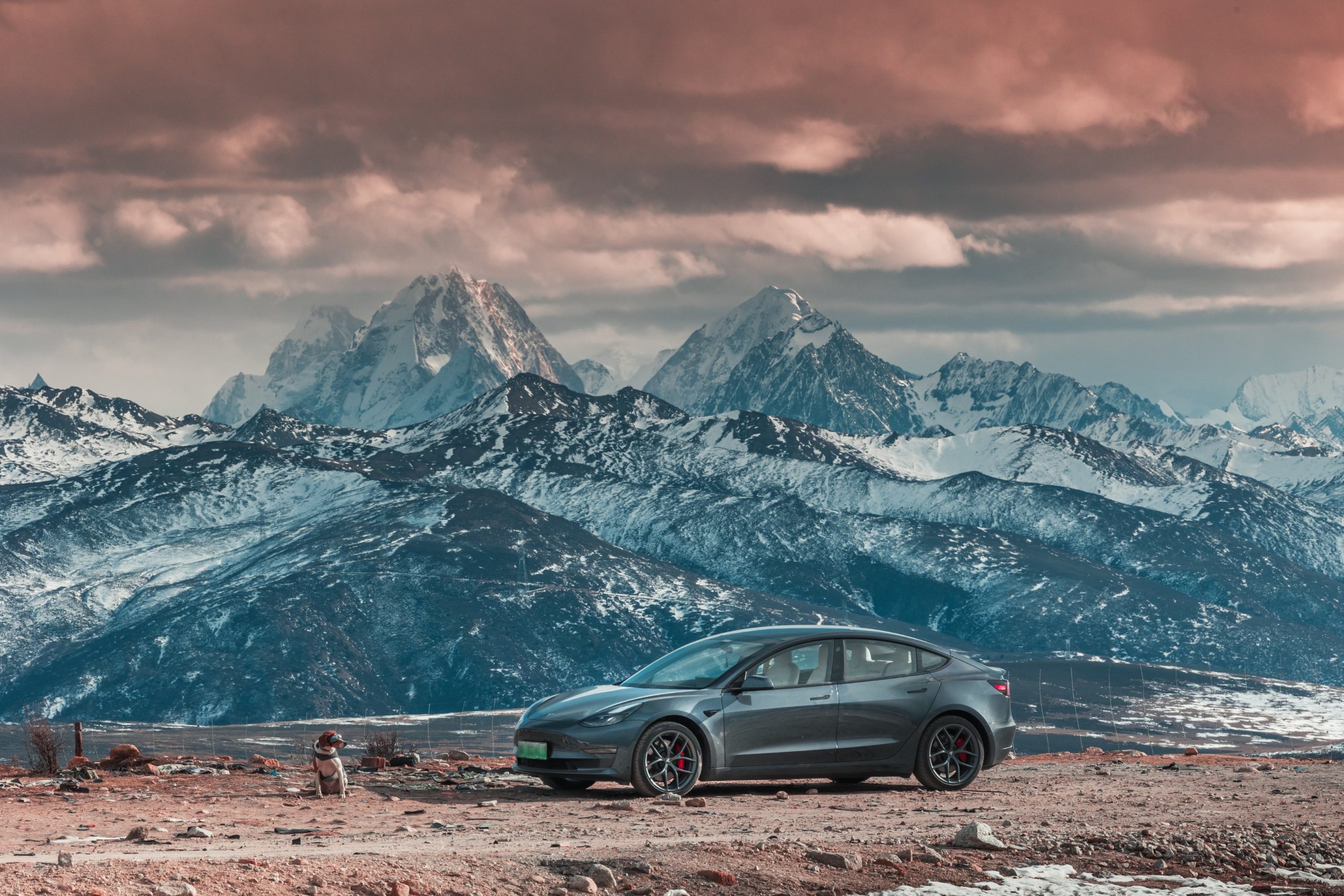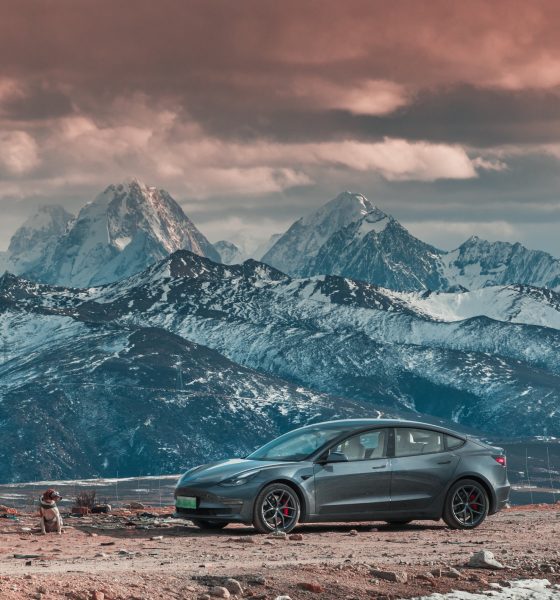

News
The best Chinese EV manufacturer is an American company: Tesla
The best Chinese EV manufacturer right now happens to be owned by an American company, Tesla. Tesla and America have a lot to be proud of.
During Tesla’s Q2 2022 earnings call yesterday, Tesla CEO Elon Musk complimented the Chinese competition but noted that the best Chinese EV manufacturer is Tesla China.
Elon Musk said that he had a lot of respect for China’s EV manufacturers. He also said that the best Chinese EV manufacturer for right now is Tesla China.
“They’re smart, they’re hardworking, and anybody that’s not as competitive as them will suffer a decline.”
“Right now the best Chinese EV manufacturer is actually Tesla China.”
Tesla China & Giga Shanghai Have A Unique History
In 2019, I wrote this article in CleanTechnica highlighting a video by Gali Filche (Hyperchange). Gali pointed out the uniqueness of Tesla’s Gigafactory Shanghai. In his video Gali said,
“Previous until now, every single car sold in China was built by a Chinese automotive manufacturer or built by a joint venture between a foreign auto company and a domestic partner,” says Gali.
“China is literally changing their policies to cater to Tesla to allow them to come into the region. … Why does China want Tesla instead of every other automaker? It’s because they have the tech.”
To spice up the uniqueness, let’s throw in a trade war between the U.S. and China. Gali said,
“As much as people say ‘Tesla is a fraud … how are they going to compete with foreign automakers? … Elon Musk is a horrible CEO he has high executive turnover’ I look at how the company has managed to navigate one of the most complex geopolitical scenarios in modern history and actually turn its incredible friction between its two biggest markets into a massive competitive advantage is brilliant management. It’s brilliant execution by Tesla, and it’s a reason why I love to be invested in this company,”
The fact that Tesla, an American company, is the leading EV manufacturer in China, a country that is leading the manufacturing of EVs, says a lot about Tesla’s innovation.
China Will Continue To Lead If Biden Continues To Put Politics Over EVs
President Biden has said time and again that China is leading the electric vehicle race. He’s also placed his focus on Ford, GM, and a few other automakers that have had nothing to do with electrifying the automotive industry.
Not only did he and his administration outwardly snub Tesla and Elon Musk, but the president seemed to put the needs of his political allies above those of his own goals regarding EVs. I’m referring to the United Auto Workers Union EV event that was held at the White House last year. According to the White House, Tesla was excluded because this was a union event.
When asked why the White House excluded Tesla from the event, Secretary Psaki said,
“We, of course, welcome the efforts of all automakers who recognize the potential of an electric vehicle future and support efforts that will help reach the president’s goal, and certainly, Tesla is one of those companies. Today, it’s the three largest employers of the United Auto Workers and the UAW president who will stand with President Biden as he announces his ambitious new target, but I would not expect this is the last time we talk about clean cars, the move toward electric vehicles, and we look forward to having a range of partners in that effort.”
When asked about Tesla being a non-union company, she said that these are the three largest employers of the United Auto Workers.
“Well, these are the three largest employers of the United Auto Workers, so I’ll let you draw your own conclusion.”
President Biden has then since acknowledged Tesla’s leadership in the EV space but the administration is still favoring the automakers who aren’t doing as much as Tesla in this space.
Politricks Aside, Tesla Continues To Lead
Tesla is continuing to lead as it pushes forward in its mission. Recently, there were at least 7,000 Tesla EVs spotted at Shanghai’s Luchao port. Tesla also announced in its Q2 2022 Shareholder Deck that Giga Shanghai is listed with an annual capacity of over 750,000 cars.
I’m sure that in Q3 we will see the results of Giga Texas, Giga Berlin the Fremont factory, and Giga Shanghai combined.
Disclaimer: Johnna is a partial Tesla shareholder with under 1 share currently. She plans on buying more and supports Tesla and its mission.
If you have a tip, feel free to send them to johnna@teslarati.com

Elon Musk
Elon Musk and Tesla AI Director share insights after empty driver seat Robotaxi rides
The executives’ unoccupied tests hint at the rapid progress of Tesla’s unsupervised Robotaxi efforts.

Tesla CEO Elon Musk and AI Director Ashok Elluswamy celebrated Christmas Eve by sharing personal experiences with Robotaxi vehicles that had no safety monitor or occupant in the driver’s seat. Musk described the system’s “perfect driving” around Austin, while Elluswamy posted video from the back seat, calling it “an amazing experience.”
The executives’ unoccupied tests hint at the rapid progress of Tesla’s unsupervised Robotaxi efforts.
Elon and Ashok’s firsthand Robotaxi insights
Prior to Musk and the Tesla AI Director’s posts, sightings of unmanned Teslas navigating public roads were widely shared on social media. One such vehicle was spotted in Austin, Texas, which Elon Musk acknowleged by stating that “Testing is underway with no occupants in the car.”
Based on his Christmas Eve post, Musk seemed to have tested an unmanned Tesla himself. “A Tesla with no safety monitor in the car and me sitting in the passenger seat took me all around Austin on Sunday with perfect driving,” Musk wrote in his post.
Elluswamy responded with a 2-minute video showing himself in the rear of an unmanned Tesla. The video featured the vehicle’s empty front seats, as well as its smooth handling through real-world traffic. He captioned his video with the words, “It’s an amazing experience!”
Towards Unsupervised operations
During an xAI Hackathon earlier this month, Elon Musk mentioned that Tesla owed be removing Safety Monitors from its Robotaxis in Austin in just three weeks. “Unsupervised is pretty much solved at this point. So there will be Tesla Robotaxis operating in Austin with no one in them. Not even anyone in the passenger seat in about three weeks,” he said. Musk echoed similar estimates at the 2025 Annual Shareholder Meeting and the Q3 2025 earnings call.
Considering the insights that were posted Musk and Elluswamy, it does appear that Tesla is working hard towards operating its Robotaxis with no safety monitors. This is quite impressive considering that the service was launched just earlier this year.
Elon Musk
Starlink passes 9 million active customers just weeks after hitting 8 million
The milestone highlights the accelerating growth of Starlink, which has now been adding over 20,000 new users per day.

SpaceX’s Starlink satellite internet service has continued its rapid global expansion, surpassing 9 million active customers just weeks after crossing the 8 million mark.
The milestone highlights the accelerating growth of Starlink, which has now been adding over 20,000 new users per day.
9 million customers
In a post on X, SpaceX stated that Starlink now serves over 9 million active users across 155 countries, territories, and markets. The company reached 8 million customers in early November, meaning it added roughly 1 million subscribers in under seven weeks, or about 21,275 new users on average per day.
“Starlink is connecting more than 9M active customers with high-speed internet across 155 countries, territories, and many other markets,” Starlink wrote in a post on its official X account. SpaceX President Gwynne Shotwell also celebrated the milestone on X. “A huge thank you to all of our customers and congrats to the Starlink team for such an incredible product,” she wrote.
That growth rate reflects both rising demand for broadband in underserved regions and Starlink’s expanding satellite constellation, which now includes more than 9,000 low-Earth-orbit satellites designed to deliver high-speed, low-latency internet worldwide.
Starlink’s momentum
Starlink’s momentum has been building up. SpaceX reported 4.6 million Starlink customers in December 2024, followed by 7 million by August 2025, and 8 million customers in November. Independent data also suggests Starlink usage is rising sharply, with Cloudflare reporting that global web traffic from Starlink users more than doubled in 2025, as noted in an Insider report.
Starlink’s momentum is increasingly tied to SpaceX’s broader financial outlook. Elon Musk has said the satellite network is “by far” the company’s largest revenue driver, and reports suggest SpaceX may be positioning itself for an initial public offering as soon as next year, with valuations estimated as high as $1.5 trillion. Musk has also suggested in the past that Starlink could have its own IPO in the future.
News
NVIDIA Director of Robotics: Tesla FSD v14 is the first AI to pass the “Physical Turing Test”
After testing FSD v14, Fan stated that his experience with FSD felt magical at first, but it soon started to feel like a routine.

NVIDIA Director of Robotics Jim Fan has praised Tesla’s Full Self-Driving (Supervised) v14 as the first AI to pass what he described as a “Physical Turing Test.”
After testing FSD v14, Fan stated that his experience with FSD felt magical at first, but it soon started to feel like a routine. And just like smartphones today, removing it now would “actively hurt.”
Jim Fan’s hands-on FSD v14 impressions
Fan, a leading researcher in embodied AI who is currently solving Physical AI at NVIDIA and spearheading the company’s Project GR00T initiative, noted that he actually was late to the Tesla game. He was, however, one of the first to try out FSD v14.
“I was very late to own a Tesla but among the earliest to try out FSD v14. It’s perhaps the first time I experience an AI that passes the Physical Turing Test: after a long day at work, you press a button, lay back, and couldn’t tell if a neural net or a human drove you home,” Fan wrote in a post on X.
Fan added: “Despite knowing exactly how robot learning works, I still find it magical watching the steering wheel turn by itself. First it feels surreal, next it becomes routine. Then, like the smartphone, taking it away actively hurts. This is how humanity gets rewired and glued to god-like technologies.”
The Physical Turing Test
The original Turing Test was conceived by Alan Turing in 1950, and it was aimed at determining if a machine could exhibit behavior that is equivalent to or indistinguishable from a human. By focusing on text-based conversations, the original Turing Test set a high bar for natural language processing and machine learning.
This test has been passed by today’s large language models. However, the capability to converse in a humanlike manner is a completely different challenge from performing real-world problem-solving or physical interactions. Thus, Fan introduced the Physical Turing Test, which challenges AI systems to demonstrate intelligence through physical actions.
Based on Fan’s comments, Tesla has demonstrated these intelligent physical actions with FSD v14. Elon Musk agreed with the NVIDIA executive, stating in a post on X that with FSD v14, “you can sense the sentience maturing.” Musk also praised Tesla AI, calling it the best “real-world AI” today.








